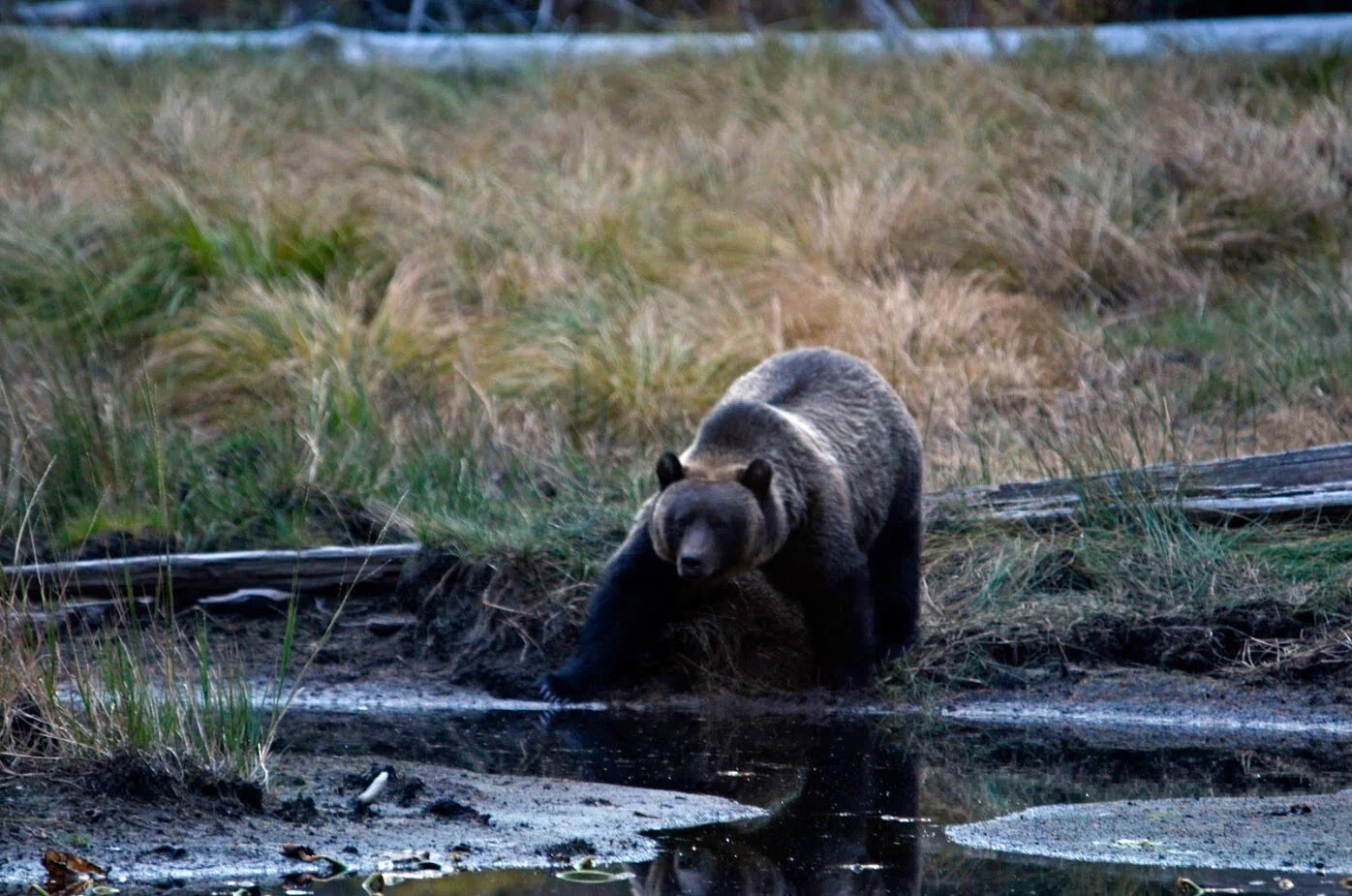Fishing Friday: Ice Fishing For Trout - Be Careful
By: Dave Zeug
Kyle Zeug shows off his brook trout haul. (Photo D. Zeug)
After decades of working and playing on the ice, I have a healthy respect for it. One poor choice can put you in deep trouble. Literally.
A successful opening weekend of deer season resulted in a pair of bucks hanging in the wood shed for my son Kyle and I. With our venison needs met, we decided to see if there was enough ice on a small backwoods lake known to hold brook trout. Big brook trout. The cold snap over the weekend had broken and the thermometer now read 51-degrees, not ideal conditions for ice fishing, but we were willing to take the chance for a good reason. We knew those trout would be in water no more than waist deep this time of year and on a warm day like this we’d be OK if we did break through.
A small hole in the ice and small jig can produce big results. (Photo K. Zeug)
There was some creaking and groaning as we gingerly slid across the lake’s ice only a few feet from shore. Two, sometimes three strokes from my chisel broke through the thin veneer of ice. It didn’t take long to realize we couldn’t stand too close together either as we watched water bubble up from the hole spreading around us like spilled milk on a countertop. It also didn’t take long to realize the fishing was going to be really good. Really good. A small jig tipped with a plastic tail produced a couple 14-inch brookies, followed by another just short of the 17-inch mark, then things slowed down. I decided to move further north on the lake, forgetting that a low November sun meant that end would have even less ice than the more shaded south end.
Maybe my mind was wandering back to the bucks we’d taken earlier in the week or maybe it was the good fishing we were experiencing. Whatever the reason, after I went into a bay out of sight of Kyle, I cut the angle away from shore toward a sunken oak across the lake that had been good to me before.
I didn’t realize what I’d done until I had the odd feeling of slowly sinking, kind of like walking on a mattress. A split second later I was eyeball deep in the lake. This wasn’t the first time I’d broken through either. During my working years as a game warden, I’d done it several times, but this was the first time I couldn’t touch bottom. For some reason I never felt the cold. I’m not sure why, maybe I was just concentrating on how I was going to get out of this mess. I still had my heavy chisel strapped around my hand and right now I sure didn’t need the added weight. That old chisel had cut countless feet of ice and as much as I hated to, I dropped it hoping to shake the strap from my wrist. That’s when I realized the business end of that chisel was touching bottom even if my feet weren’t.
Walking across the snow covered ice, one needs to be careful. (Photo K. Zeug)
As odd as it sounds, that 6-pound chisel did what my feet couldn’t do. It held me up by giving me solid contact with the bottom 8-feet below. Using it almost like a pogo stick while breaking the soft ice with my other arm, I worked toward shore 30-yards away and before long my feet touched bottom. Cold and wet as I was, it felt really good too.
Despite the cold, wet ending to the day, the trip is deemed a success, (Photo D. Zeug)
There were lessons reinforced that day. Don’t fish alone on new ice, although once I contacted bottom with the chisel, I didn’t call Kyle for help because I feared he’d take the shortest route to me and break through far from shore. That would have been disastrous. I’d given my hand-held ice picks and a rope for this kind of emergency to Kyle, but in the soft ice I doubt they’d have worked. Wearing a life jacket would have been great, but I didn’t have one. That was my bad.
I still plan to play on the ice. If it’s early ice, I’ll be the guy with a life vest on and ice picks around my neck. Maybe I’ll be carrying my chisel too, just in case.






